Table of contents
Chickpeas ( Cicer arietinum) are known for their high protein and fiber content. This healthy legume ( organic?) can be prepared in many different ways, but should not be eaten raw.
Use in the kitchen
Dried chickpeas (raw) should first be soaked for at least 12 hours, then rinsed thoroughly and cooked in new water for about 2 hours. If soaked for 24 hours, the cooking time is reduced to about 30-40 minutes. Chickpeas have a very mild, slightly nutty flavor.
Chickpeas can be used in all kinds of vegetarian and vegan dishes. They are a typical ingredient in Indian curries - together with potatoes, sweet potatoes or spinach. They are also popular in stews, soups and salads - e.g. with tomatoes and quinoa or couscous. Sweet peppers stuffed with chickpeas and rice are easy to prepare and taste wonderful. After cooking, chickpeas can also be fried with various vegetables or roasted with all kinds of spices and enjoyed as a snack. Chickpeas can also be made into patties. Famous oriental dishes made from chickpeas are falafel (fried or baked balls) and hummus (chickpea puree).
Chickpeas go well with strong spices such as curry, chili, garlic, cumin and garam masala. By preparing them with anise, fennel seeds, caraway or herbs such as parsley, rosemary or thyme, chickpeas can be made more digestible and thus prevent flatulence, which is caused by the high carbohydrate content.
Chickpeas can also be easily sprouted. Sprouted chickpeas spice up salads or can be used as a tasty decoration for all kinds of dishes.
Ground, dried chickpeas are a gluten-free flour alternative that is suitable for pasta, cake bases and flatbreads, for example.
Can you eat chickpeas raw? You should not eat chickpeas uncooked. They contain the indigestible toxin phasin. However, this breaks down when exposed to high temperatures, which is why chickpeas should be eaten cooked. Most of the toxin can be removed by soaking and rinsing.
Recipe for vegan vegetable chickpea pot
Ingredients (for 4 people): 300 g chickpeas (raw, organic), 4 red onions, 1 red bell pepper, 1 yellow bell pepper, 2 zucchini, 4 tbsp rapeseed oil, 1 can of tomatoes (chopped), 125 ml vegetable stock, ½ bunch of peppermint, ½ bunch of basil, 2 red chili peppers, 4 cloves of garlic, some salt andpepper.
Preparation: Place the chickpeas in a bowl of water the night before and leave to swell overnight. The next day, drain in a sieve and heat in a pan of fresh water. Cover and cook over a low heat for about 1-1.5 hours until soft.
Peel and quarter the onions. Wash the sweet peppers and cut into strips. Wash the zucchini and cut crosswise into slices about 1 cm thick. Heat 2 tablespoons of rapeseed oil in a large pot. Add the onions, sweet peppers and zucchini to the pot and fry briefly. Pour the chopped tomatoes and vegetable stock into the vegetables. Drain the cooked chickpeas and mix with the vegetables. Season everything with a little salt and pepper and simmer for about 10-12 minutes at a medium heat. Wash the chili peppers, remove the stems and cut into rings. Peel the garlic cloves and cut into thin slices. Heat the chili and garlic in 2 tablespoons of rapeseed oil for 1-2 minutes. Rinse the mint and basil and shake dry. Pick off the leaves, chop finely and add to the vegan vegetable and chickpea pot. Arrange in a bowl and pour the hot oil over them.
Vegan recipes with chickpeas (raw) can be found under the note: " Recipes that have the most of this ingredient ".
| Not only vegans or vegetarians should read this: Vegans often eat unhealthily. Avoidable nutritional errors. |
Purchasing - Storage
Well-stocked supermarkets (e.g. Coop, Migros, Denner, Volg, Spar, Rewe, Edeka, Billa) offer chickpeas (raw, dried) all year round, often in organic quality (bio). Other supermarkets (e.g. Aldi, Hofer, Lidl) only occasionally have them on special offer. In organic supermarkets (e.g. Alnatura, Denn's Biomarkt) you can find dried, raw chickpeas in organic quality (bio). Chickpeas (raw) can also be bought in delicatessens, health food stores, Asian shops and online shops. In most supermarkets and organic supermarkets you can also buy cooked chickpeas in cans.
The availability of raw chickpeas varies depending on the size of the store, catchment area, etc. If you are interested, click on our recorded food prices for the DA-CH countries (above under the ingredient image). There you will find current prices from various supermarkets and their price development.
Storage tips
Dried chickpeas should be stored in an airtight container in a cool, dry place. This way, the legumes will last for one to two years. Allow the chickpeas to be exposed to some oxygen occasionally to keep them fresh.
Ingredients - Nutritional values - Calories
100 g of chickpeas (raw) consist of 63 g of carbohydrates and have an energy content of 378 kcal. With 12 g/100g of fiber, they are very filling. They also have a high protein content (20 g/100g). Fat is only moderately high at 6 g/100g - comparable to quinoa (peeled) (6.1 g/100g) and oat flakes (6.5 g/100g). 2
Raw chickpeas contain a particularly high amount of the trace element manganese, at 21 mg/100g (1,065% of the daily requirement). This content is only comparable to that of other spices, such as turmeric (20 mg/100g). Wheat germ contains slightly less, at 13 mg, and cloves contain even more manganese, at 60 mg/100g. 2
In addition, raw chickpeas contain 557 µg/100g of folate - that's 279% of the daily requirement. Borlotti beans (604 µg/100g) and lentils (479 µg/100g) contain a similar amount when raw. Even more of this vitamin can be found in mung beans, at 625 µg/100g. 2
The threonine content of raw chickpeas is 0.77 g/100g (82% of the daily requirement) and is comparable to that of mung beans (0.78 g/100g) and flaxseed (0.77 g/100g). At 1.8 g/100g , raw soybeans contain just over twice as much of the amino acid. 2
The complete ingredients of chickpeas (raw), the coverage of the daily requirement and comparison values with other ingredients can be found in our nutrient tables. In the article Nutrients explained you will get a detailed insight into the topic.
Health effects
Chickpeas are high in energy, nutritious and balanced in their ingredients. Their high fiber content also keeps you full for a long time and is therefore good for losing weight.
In addition, chickpeas have the following medical effects on health: They lower cholesterol levels, prevent arteriosclerosis and secondary diseases (e.g. heart attacks) and strengthen the nervous system. Chickpeas can also help with constipation. 3 Chickpeas also contain bioactive compounds (such as carotenoids and isoflavones) that can act as antioxidants or anti-cancer agents, for example. 4
The high folic acid (folate) content in raw chickpeas is particularly interesting for pregnant women, who are advised to increase their intake. 3 However, please note that cooked chickpeas contain significantly less folate.
Pulses, including chickpeas, are all gluten-free. However, caution should be taken with products made from chickpea flour, as some may be combined with wheat flour or other gluten-containing substances. Look for the crossed-out ear of corn or similar gluten-free symbols.
Dangers - Intolerances - Side effects
Some compounds contained in chickpeas, such as the triple sugar raffinose, stimulate the formation of gas in the intestines, which can lead to unpleasant flatulence in sensitive people. The flatulence-causing effect of chickpeas can be almost completely avoided by cooking and sprouting them. Soaking and cooking unsprouted chickpeas has a slightly lesser effect. 5
Chickpeas should not be eaten raw because of indigestible lectins (phasin). Heating breaks down the toxins and makes the chickpea edible.
Raw chickpeas have a poor ratio of linoleic acid (LA) to alpha-linolenic acid (ALA) at 26:1. Unripe chickpeas, which are also edible, have a good ratio of 1.33:1.
Folk medicine - natural medicine
In traditional Chinese medicine ( TCM), chickpeas are said to have a spleen and stomach regulating and detoxifying effect. Chickpeas are also used to treat diarrhea. 6
Ecological footprint - animal welfare
Pulses such as chickpeas, but also beans, soybeans, lentils and peas are considered a healthy plant-based protein source due to their high protein content and fiber. They have a better environmental impact than milk and meat products. Their ecological footprint is smaller because they require less arable land and water and have fewer CO2 emissions. It is therefore more environmentally and climate-friendly to eat plant-based proteins than meat and milk products. In addition, many calories are lost during meat and milk production because more plant-based calories have to be fed to animals than are ultimately produced as animal calories. 14,15,16
Ideally, when shopping, you should look for regional , organically grown products, as organic farming does not use synthetic pesticides. In conventional farming, on the other hand, large quantities of herbicides (such as glyphosate) are used when growing pulses, and not just to control weeds. In desiccation, a practice to speed up the harvest, the crop is deliberately killed using herbicides. This dries out the plant and the crop ripens more quickly. This is used primarily in countries where the growing season is too short, such as Canada, or simply as a time-saving measure. 17 Accordingly, there may also be an increased concentration of this agent in the end product, especially in pulses or grains. 18 A large proportion of organic chickpeas come from India or the Mediterranean region. Chickpeas, and pulses in general, enrich the soil with nitrogen, which plants need to grow, which is why they are often used in organic farming for crop rotation. 11
The production of 1 kg of chickpeas requires 4177 litres of water. However, this figure does not indicate whether the chickpeas are raw or dried. The water footprint is lower than that of lentils (5874 litres) or dried beans (5053 litres) and is significantly lower than that of the production of 1 kg of meat (15,400 litres). 15.19
Chickpeas can also be bought ready-to-eat in a jar or can. However, the amount of energy and raw materials required is higher than if you buy them dried and prepare them yourself. We therefore recommend buying dried chickpeas for preparation at home. 20
Worldwide occurrence - cultivation
The chickpea most likely originates from an area in what is now southeastern Turkey and neighboring Syria. Cicer reticulatum can be seen as the forerunner or both species may have had a common ancestor. 7 Where are chickpeas grown? Chickpeas are cultivated in over 50 countries, with India producing the most of them worldwide. 8 In India, Africa, Central and South America, the chickpea is still an important staple food. 9
Found in the wild
The chickpeas that are eaten today probably originate from Asia Minor and do not occur naturally. Closely related wild Cicer species are Cicer reticulatum, 1 Cicer echinospermum and Cicer bijugum. 7
Cultivation - Harvest
Chickpeas actually need a warm, temperate climate, but if you want to grow chickpeas in your own garden, you can start growing young plants indoors from mid-April. They can be planted in the garden or, better yet, in the greenhouse from mid-May. Chickpeas need a bright, warm location and loose, sandy, nutrient-poor soil. The optimal temperature for chickpeas is 25 °C, but it is important that the temperature stays above 5 °C and that there is no frost. The chickpea plant can cope with drought, but not with too much moisture. The chickpeas are ready for harvest 8-12 weeks after sowing. 10 To obtain the raw chickpeas, harvest the whole chickpea bushes in the field when the pods are yellow. The chickpea pods are then dried in a well-ventilated place until the pods open. Then you can collect the hard, dry chickpeas and process them further.
Further information
Chickpeas (genus Cicer) belong to the legume family (Fabaceae) and the subfamily Faboideae. Despite their name, the chickpea is not closely related to the pea ( Pisum sativum).
The German name chickpea is probably derived from the Latin species name Cicer arietinum, which could be derived from the Hebrew word "kikar" (round, plump). The English name chickpea also seems to have the same origin and has nothing to do with chickens. 12
After the soybean, the chickpea is the most widely cultivated legume. Two types of chickpeas are most commonly used: the large, beige seeds called Kabuli are more common in the Mediterranean region and better known in Europe. The smaller, darker seeds called Desi are mainly cultivated in the Middle East and Southeast Asia. 13
Alternative names
Chickpeas can also be found under the following names: Garbanzo beans, real chickpeas, Roman chickpeas, Venus chickpeas or field peas. Incorrect spellings can also be found, such as chickpea, chickpea.
In English they are called raw chickpeas, dry chickpeas, garbanzo beans or Bengal gram. In Spanish, raw chickpeas are called garbanzos crudos (singular: garbanzo crudo). In Russian (по русски) chickpeas are called Нут.
Other uses
Chickpeas and raw chickpea flour are not only used in the kitchen, but also in cosmetics. For example, you can use chickpea flour mixed with a little water as a natural body scrub, or you can massage chickpeas into a paste into the scalp to counteract hair loss.
Bibliography - 19 Sources (Link to the evidence)
| 1. | Dönmez EO, Belli O. Urartian plant cultivation at Yoncatepe (Van), Eastern Turkey. Econ Bot. 1. September 2007;61(3):290. |
| 2. | USDA United States Department of Agriculture. |
| 3. | Roger JDP. Heilkräfte der Nahrung. Advent-Verlag: Zürich. 2006: 100-101. |
| 4. | Gupta RK, Gupta K, Sharma A, Das M, Ansari IA, Dwivedi PD. Health risks and benefits of chickpea (Cicer arietinum) consumption. J Agric Food Chem. 2017; 65(1): 6-22. |
| 5. | Mahmood T, Hameed T, Hasnain S, Ali S, Qayyum A, Mehmood A, u. a. Assessment of flatulence causing agents in Chickpea (Cicer arietinum L.) and their possible removal. Food Sci Technol. 2017; 38: 120-125. |
| 6. | Asante-academy.com Chick peas. |
| 7. | Van der Maesen LJG. Origin, history and taxonomy of chickpea. In M. C. Saxena & K. B. Singh (Eds.), The chickpea (pp. 11-34). C.A.B. International: 1987. |
| 8. | Hsph.harvard.edu Chickpeas (Garbanzo Beans). |
| 9. | Britannica.com Chickpea plant. |
| 10. | Plantura.garden Kichererbsen: Tipps zum Pflanzen, Pflegen & Ernten der lustigen Erbse. |
| 11. | Pini U. Das Bio-Food Handbuch. Ullmann Verlag: Potsdam; 2014: 384-385. |
| 12. | News.rub.de Woher kommt der Name Kichererbse? |
| 13. | Specialtyproduce.com Fresh Garbanzo Beans. |
| 14. | WWF. Die Proteinfrage. Von pflanzlichen Alternativen bis hin zu Insekten (PDF). |
| 15. | Albert-Schweitzer Stiftung. Das steckt hinter einem Kilogramm Rindfleisch. |
| 16. | Institut für Energie- und Umweltforschung Heidelberg. Ökologische Fussabdrücke von Lebensmitteln und Gerichten in Deutschland (PDF). |
| 17. | Xu J, Smith S, Smith G, Wang W, Li Y. Glyphosate contamination in grains and foods: An overview. Food Control. 2019; 106. |
| 18. | CVUA Stuttgart. Glyphosat in Obst und Gemüse - so präsent wie in den Medien? 2020. |
| 20. | Henn K, Zhang X, Thomsen M, Rinnan A, Bredie WLP. The versatility of pulses: Are consumption and consumer perception in different European countries related to the actual climate impact of different pulse types? Future Foods. 2022; Vol 6. |

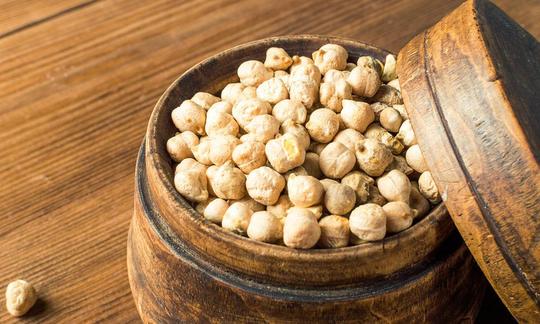

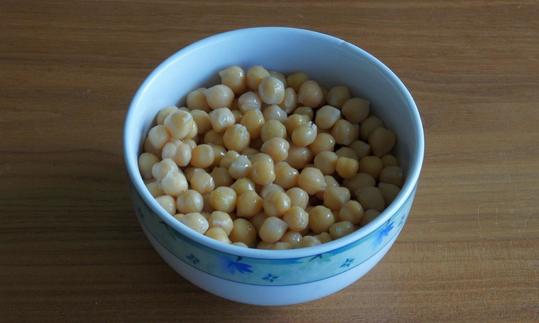

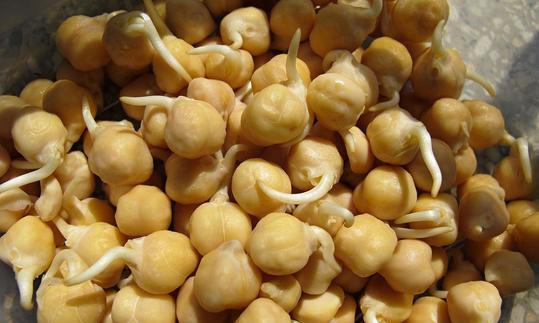

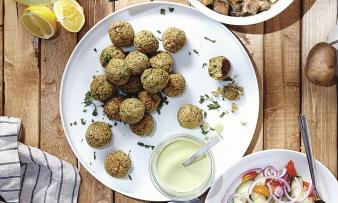
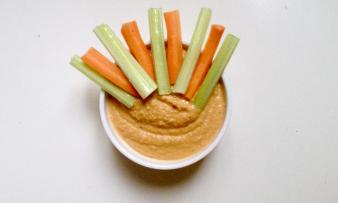
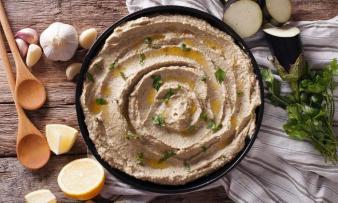





Comments